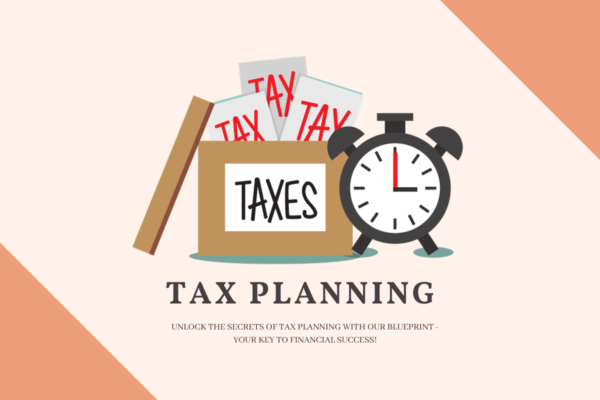Creating a blueprint for tax planning can help you make informed financial decisions and optimize your tax liabilities. While tax planning strategies vary based on individual circumstances, here’s a general framework to consider:
1. Set Clear Financial Goals:
– Define your short-term and long-term financial objectives, including savings, investments, and retirement goals.
– Determine your risk tolerance, as it will influence your investment choices.
2. Assess Your Current Financial Situation:
– Review your income, expenses, assets, and liabilities.
– Analyze your tax return from the previous year to identify areas for improvement.
3. Understand Tax Laws and Regulations:
– Stay informed about current tax laws, regulations, and any recent changes that might impact your tax situation.
– Consider consulting a tax professional or financial advisor to ensure you’re up to date and understand how changes may affect you.
4.Maximize Tax-Advantaged Accounts:
– Contribute to retirement accounts like 401(k)s or IRAs, taking advantage of employer matches and tax deductions.
– Consider Health Savings Accounts (HSAs) and Flexible Spending Accounts (FSAs) for healthcare expenses.
– Utilize education savings accounts such as 529 plans for college expenses.
5. Asset Allocation and Investment Planning:
– Choose investments that align with your financial goals and risk tolerance.
– Consider tax-efficient investments like index funds or ETFs that generate fewer capital gains.
6. Tax-Efficient Investing:
– Use tax-loss harvesting to offset capital gains with capital losses.
– Invest in tax-efficient funds and consider holding investments for the long term to qualify for lower capital gains tax rates.
7.Income Splitting and Family Tax Planning:
– Explore income splitting strategies with family members to potentially lower your overall tax burden.
– Maximize tax credits for dependents, such as the Child Tax Credit.
8. Utilize Tax Credits and Deductions:
– Take advantage of tax credits and deductions available to you, such as the Earned Income Tax Credit (EITC) or the Child and Dependent Care Credit.
– Itemize deductions when it results in greater tax savings than taking the standard deduction.
9.Manage Debt Wisely:
– Consider the tax implications of different types of debt. Mortgage interest may be deductible, while credit card interest is not.
– Strategically use loans for investments that generate tax-advantaged income.
10.Charitable Giving:
– Make tax-efficient charitable contributions by donating appreciated assets like stocks.
– Consider setting up a donor-advised fund for more strategic and tax-efficient charitable giving.
11. Estate Planning:
– Develop an estate plan that minimizes estate taxes and ensures your assets are distributed according to your wishes.
– Review and update your will, trusts, and beneficiary designations regularly.
12.Tax-Efficient Withdrawal Strategies:
– Plan how you’ll withdraw funds in retirement to minimize taxes.
– Consider Roth IRA conversions and tax-efficient distribution methods.
13.Regularly Review and Adjust:
– Tax planning is not a one-time event. Revisit your tax strategy annually and make adjustments as your financial situation evolves.
14.Consult a Tax Professional:
– When dealing with complex tax situations or significant financial changes, consult a tax professional or financial advisor for guidance and assistance.
15. Stay Organized:
– Keep meticulous records of financial transactions, expenses, and receipts to support your tax filings and deductions.

